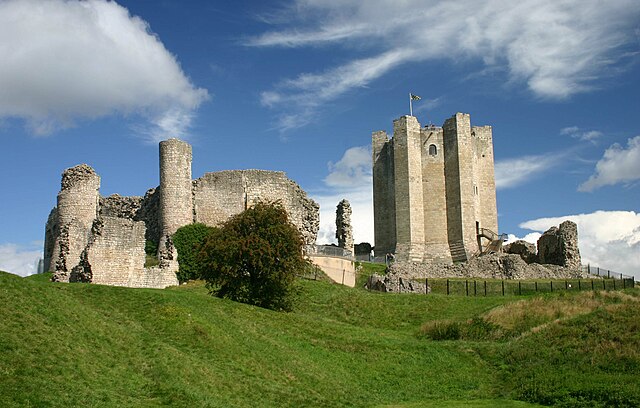Conisbrough Castle is a medieval fortification in Conisbrough, South Yorkshire, England. The castle was initially built in the 11th century by William de Warenne, the Earl of Surrey, after the Norman conquest of England in 1066. Hamelin Plantagenet, the illegitimate, parvenu brother of Henry II, acquired the property by marriage in the late 12th century. Hamelin and his son William rebuilt the castle in stone, including its prominent 28-metre (92 ft)-high keep. The castle remained in the family line into the 14th century, despite being seized several times by the Crown. The fortification was then given to Edmund of Langley, passing back into royal ownership in 1461.
The castle seen from the south-east
Aerial photograph in 2007, showing the outer and inner baileys (bottom left and top right)
The inner bailey seen from the outer bailey, showing the remains of the barbican and the mural towers
The keep, re-roofed and floored between 1993 and 1995
South Yorkshire is a ceremonial county in the Yorkshire and the Humber region of England. It borders North Yorkshire and West Yorkshire to the north, the East Riding of Yorkshire to the north-east, Lincolnshire to the east, Nottinghamshire to the south-east, and Derbyshire to the south and west. The largest settlement is the city of Sheffield.
Image: Sheffield City Skyline
Image: The Minster Church of Saint George and the canal basin, Doncaster geograph.org.uk 3560854
Image: Rotherham, England, 2 May 2010 (17), the New County pub and Rotherham town centre
Image: A Distant View of Barnsley








